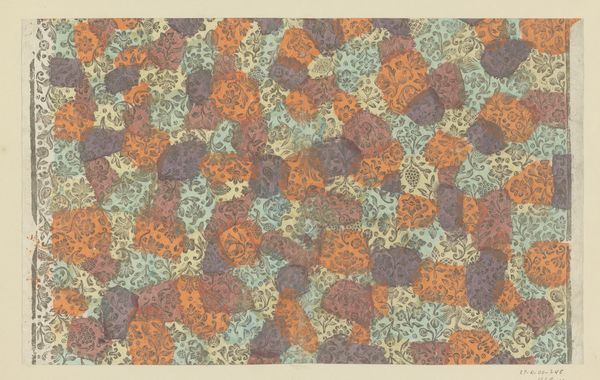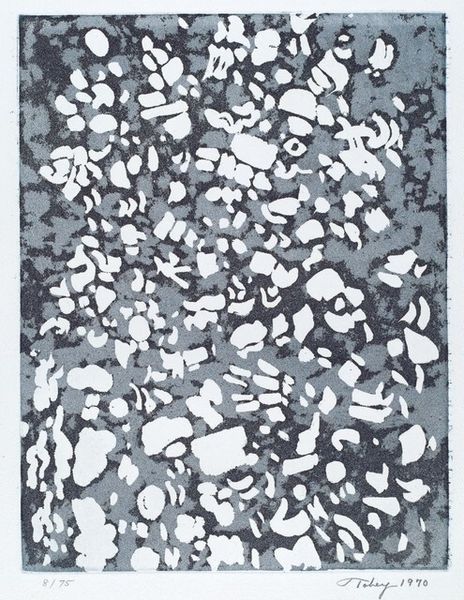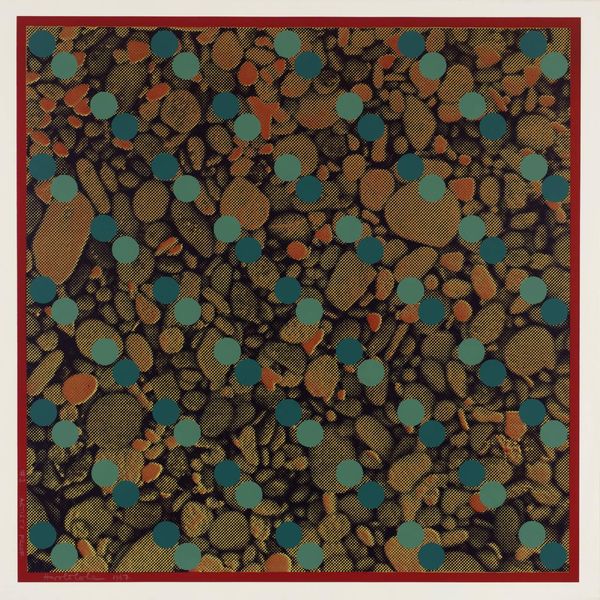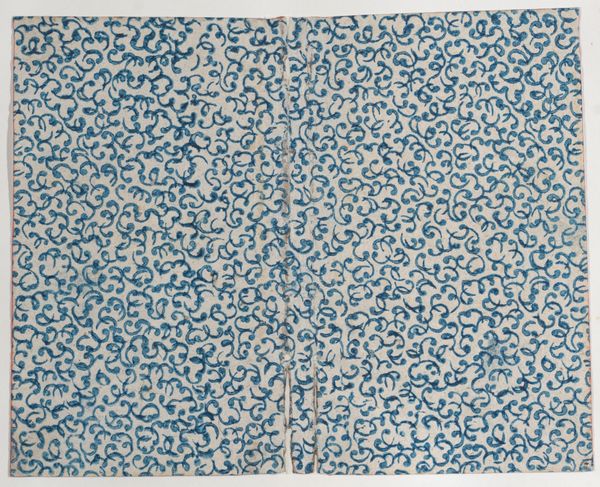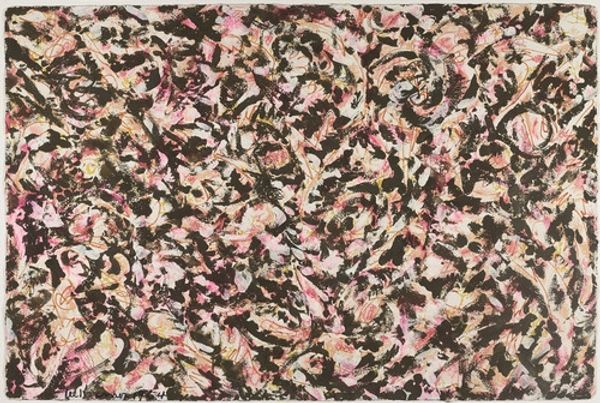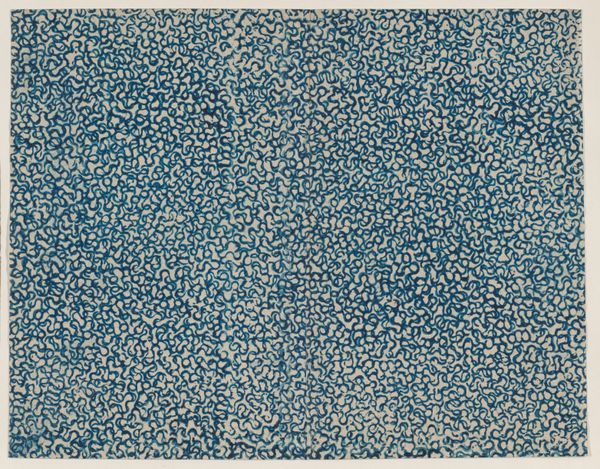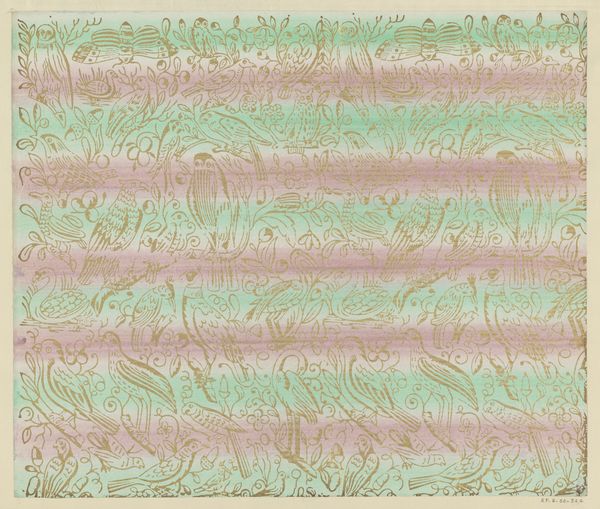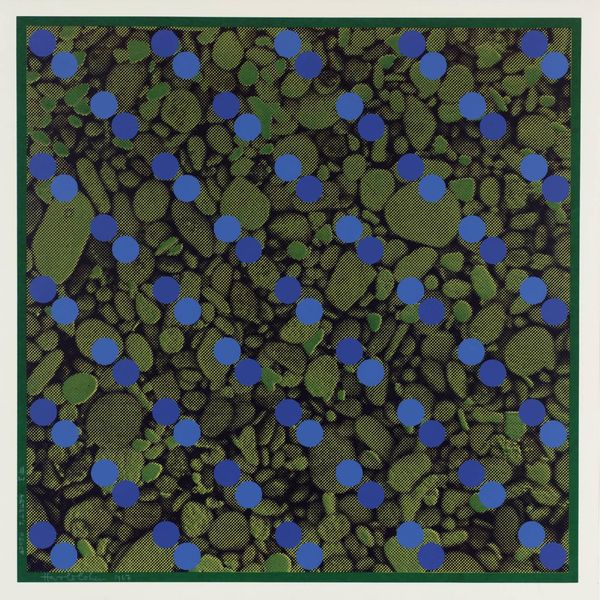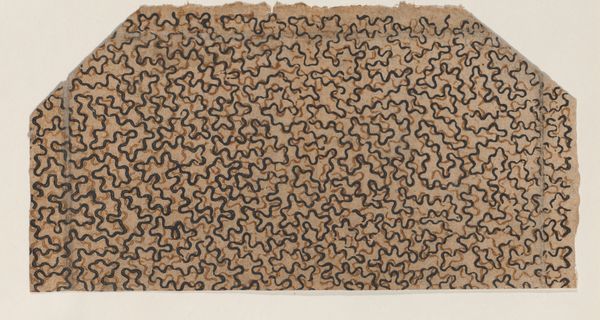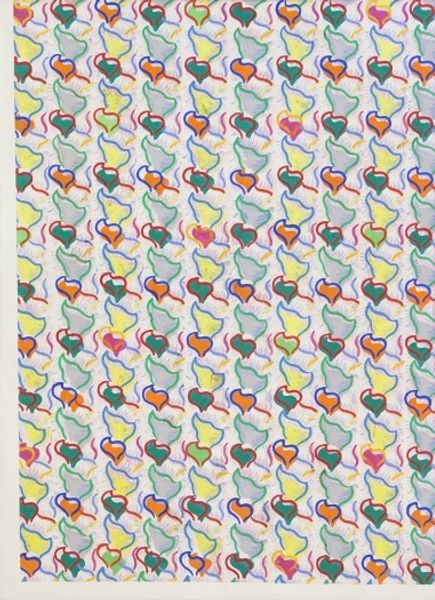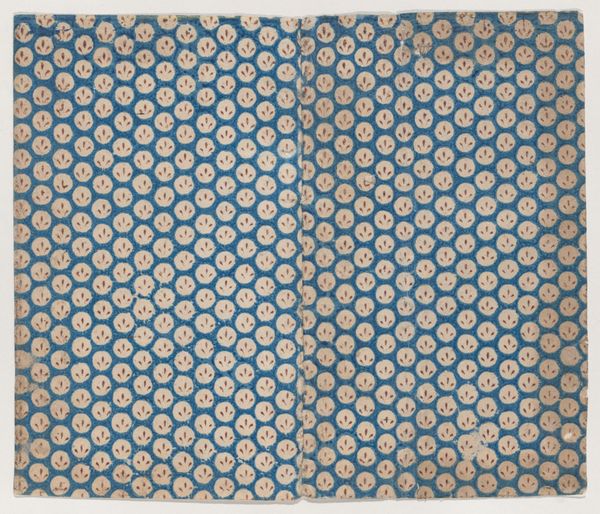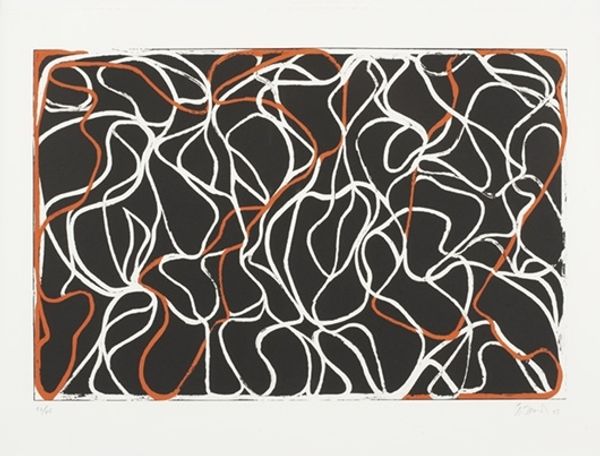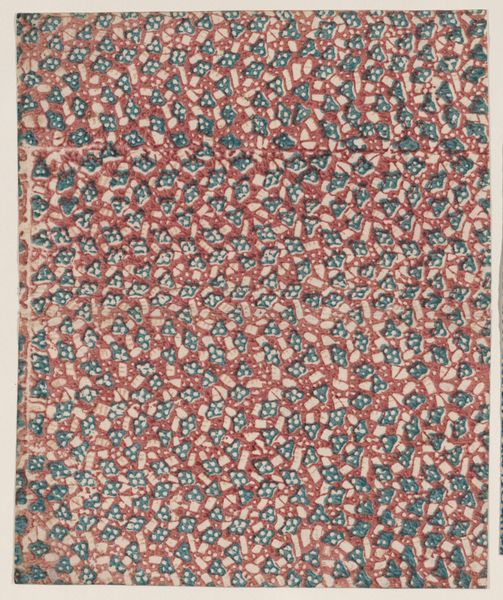
#
washington-colour-school
Dimensions: sheet: 30.16 × 40.01 cm (11 7/8 × 15 3/4 in.)
Copyright: National Gallery of Art: CC0 1.0
Curator: Alma Thomas's "Untitled," created in 1973 using acrylic paint, strikes me with its pure, unadulterated joy. It’s simply vibrant. What are your immediate thoughts? Editor: There's an overwhelming sense of organized labor in this painting. I'm seeing distinct, repetitive units, applied in a grid-like fashion. How do the materiality of acrylic and her chosen mark-making reflect the social context of artistic production at this time? Curator: It’s less about a strict grid and more about rhythmic repetition, wouldn't you say? I perceive those scattered turquoise shapes, those brushstrokes—rectangles, triangles—as joyous visual cues. They remind me of mosaic tesserae, building toward something bigger. It carries symbolic, almost spiritual weight through its colors and pattern. Editor: Agreed, yet, consider the choice of acrylic. It’s a product of industrial chemistry, widely available, relatively inexpensive. Does that democratizing aspect impact its reading? Alma Thomas labored in her artistic practice for years and achieved the status that provided access to modern paint, how did the ready-made quality of this acrylics open possibilities in her work, or for other artists pushing the boundaries between craft and so-called high art? Curator: Absolutely. Her background as a teacher heavily informs her art. She's taking something as mundane as house paint and elevating it. The electric blue feels both down-to-earth and transcendent, resonating with motifs of hope and creative energy. It might imply her artistic resilience at that time. Editor: Precisely, it raises essential questions. Were industrial materials necessarily democratizing? How might we reconsider labor, consumption, and what constitutes an artwork? This seemingly playful composition subtly reflects broader material shifts within the art world of the 70's. Curator: Ultimately, Thomas weaves a tale of transcendence from everyday material and form. Perhaps it speaks of how meaning isn’t just in the myth, but also the making, a union of her skill and time and spirit and her art as cultural carrier of universal values. Editor: And maybe by viewing it through this lens, we can gain insights on art’s place at the time. Thanks for opening up how symbols speak to cultural stories of industrial shift!
Comments
No comments
Be the first to comment and join the conversation on the ultimate creative platform.
